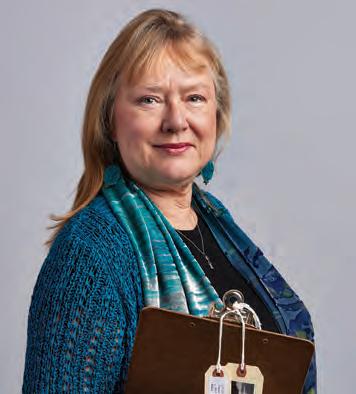
2 minute read
Guardian of the Gallery
Irene Taurins ’65-’67 retires after 42 years at Philadelphia museum
On the day that Irene Taurins ’67 retired last August after 42 years as registrar of the Philadelphia Museum of Art, she could have told you where any of 240,000 objects owned by the museum was located.
It was her ability to keep track of things that helped her get the job in the first place. An endowed scholarship in honor
She started her college career at Pitt-then graduated from the Pittsburgh campus. After satisfying some wanderlust with a year hitchhiking in Europe, where she supported herself working on an archaeological dig in England, and as a film extra on the set of Steve Green ’87-’92 retired from “The Great White Hope” in Barcelona (a job the Bradford Police Department she literally got walking down the street because the casting director wanted blondes), she ended up at Sotheby’s in New York, the famed auction house.
As decorative arts administrator, she kept track of decorative arts – small objects that are easy to misplace, such as silverware, vases and ornate tchotchkes. “My claim to fame,” she said, “was finding items that had been lost. I would track them down.”
After six years at Sotheby’s, which included promotions to oversee the painting departments as registrar, she moved to the Philadelphia Museum, where, in a time before computerization, she became responsible for the organization and storage of the museum’s collection as well as loaning items to other museums, crating and shipping, securing insurance and anything else that had to be considered.
Items on loan to other museums needed a courier from the museum to travel with them, and in this role, she traveled to Japan, India, all through Europe and to many U.S. cities.
She also was responsible for arranging for items to come to the museum for exhibitions, which provided her with another favorite part of the job – uncrating.
In 1992, the museum borrowed DaVinci drawings from Queen Elizabeth’s collection. “I got to see them up close in our lab before they were framed,” she said.
Borrowing items also provided some of her biggest challenges, such as arranging for the shipping of giant Anselm Kiefer works from Germany for an exhibition in 1988. The paintings of post-World War II destruction were both large (11 feet by 18 feet) and delicate, with barbed wire and other three-dimensional items attached. To get them into the museum, she had to modify the existing doors.
“I loved the details,” she said. “I liked solving the problems and the logistics.”





